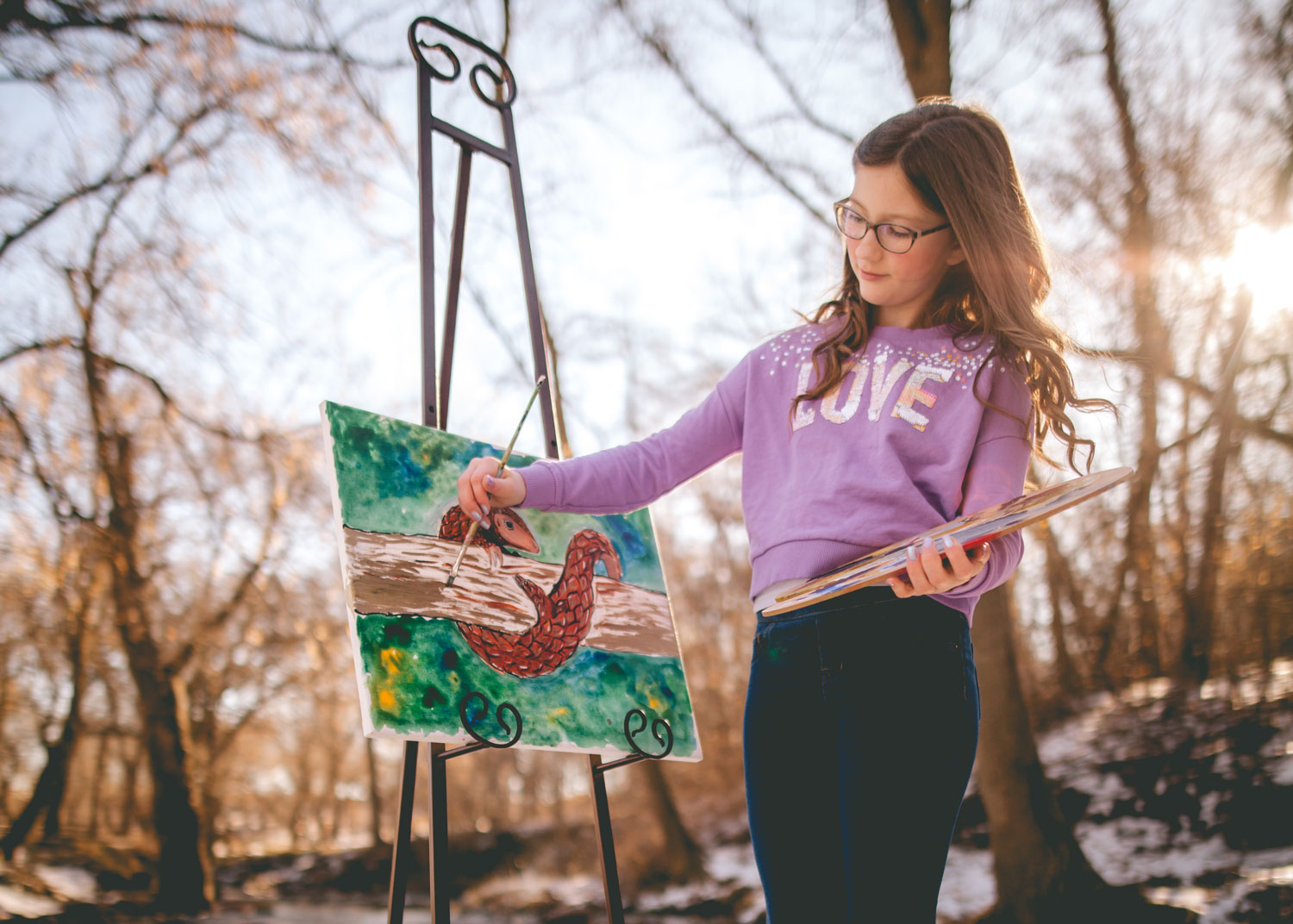When Bria Neff was eight years old she began painting endangered animals — but she did more than just paint them. She set up a website (with the help of her family) and started selling the paintings online, using the profits to support organizations dedicated to their protection. She soon came up with a name for her campaign: Faces of the Endangered.

Four years later, Neff (now 13) has painted over 250 different endangered species, and the profits have brought in more than $68,000. That money has been donated to a number of nonprofits including the World Wildlife Fund, the Jane Goodall Institute, and Conservation International, among others.
Despite her young age, Neff’s work is being taken seriously. This is partly due to her deep knowledge of, and reverence for, each animal’s uniqueness. Her process begins long before she ever picks up a paintbrush. Once Neff has chosen a species that is vulnerable to extinction, she delves into researching all aspects of the animal. She studies its behavior and characteristics, its habitat, and the major threats to its survival. She frequents the library, watches documentaries, and studies YouTube footage of the animal, gathering as much insight into its appearance and movements as possible. This learning takes place over a period of weeks, and sometimes months, before she is ready to contemplate how she will approach the canvas.
“It’s challenging to capture them,” says the young artist, who is currently a home schooled seventh grader. Previously, she has been enrolled in both private and public schools, but eventually her parents settled on home schooling to allow her to delve deeper into her talents and passions. She has used the flexibility in her schedule to enroll in high school-level environmental science courses and seek out new painting techniques. Naturally curious and intrinsically motivated, Neff is constantly critiquing her own work, which is made primarily with acrylics and watercolor, and her approach has evolved over time.
Neff’s empathy for all forms of life comes partly from her family’s lifestyle, but it was also heavily influenced by her environment. She spent her early childhood in beautiful Bozeman, Montana, where her parents “let her have an organic childhood,” as her mother, Amity Neff, puts it. Walks in nature were a frequent activity, and for Neff, “being outdoors was part of her daily Zen,” adds her mother, who describes her daughter as “truly concerned about the state of the planet and animal and human welfare.”
Mexican gray wolves, one of the most critically endangered mammals in North America, rank among her favorite animals. They shy away from human contact, but their numbers continue to be threatened primarily because of hunting and trapping. (Read more about the challenges facing Mexican gray wolf recovery in “Recovery Roadblocks.”) It was a major cause for celebration then, when in May 2018 a female Mexican gray wolf at the Wolf Conservation Center in Salem, New York — which is part of the official recovery effort for the species — gave birth to nine healthy pups. The center named each one after a female conservationist who has tirelessly worked to protect wildlife and the environment. Neff was the youngest recipient of this honor. Another pup was named for Jane Goodall, whom Neff looks up to because of her work with chimpanzees and because “she shows people that girls can do anything”
In June 2019, Neff was invited to create a painting to be sold at the Wolf Conservation Center’s annual fundraising auction. She painted a Mexican gray wolf pup gazing at a purple butterfly and entitled it “Wonder.” It sold for $25,000 — $10,000 more any other single painting she’d sold in the past. When asked if she was surprised at the amount, Neff replied with an emphatic “yes” saying, “My face hurt from smiling so much.” She also created a second wolf portrait for the event and gave it to the Center’s president, Martha Handler, as a gift. This was Neff’s second year attending the auction and creating a portrait at the center’s request.
Neff is also inspiring change through an organization she helped found called The Endangered Species Youth Activist Network. It serves to connect young environmental activists online. Neff supports other youth activists working to make positive change in the world by dedicating space on her Facebook page to highlight their work and opportunities to support their efforts. At a recent awards ceremony for the “Girls with Heart” Tween ambassador program, which focuses on inspiring and empowering girls to live their lives authentically, Neff spoke to a live audience of her peers: “Your ideas are valuable and your voices are powerful, so be original, stand out, and speak up.”
Neff has been the recipient of multiple awards, including the Gloria Barron Prize for Young Heroes, the International Fund for Welfare’s Animal Hero Award, and the Points of Light award. Her mother says she feels honored to walk beside her as she has matured and “taken her place as a visual and verbal activist for nature and endangered species.” She also shares that their family cherishes Mahatma Gandhi’s famous words: “Be the change you wish to see in the world.” “It isn’t just a quotation,” explains Neff’s mom. “For us, it’s a lifestyle and a family activity.”
We don’t have a paywall because, as a nonprofit publication, our mission is to inform, educate and inspire action to protect our living world. Which is why we rely on readers like you for support. If you believe in the work we do, please consider making a tax-deductible year-end donation to our Green Journalism Fund.
Donate